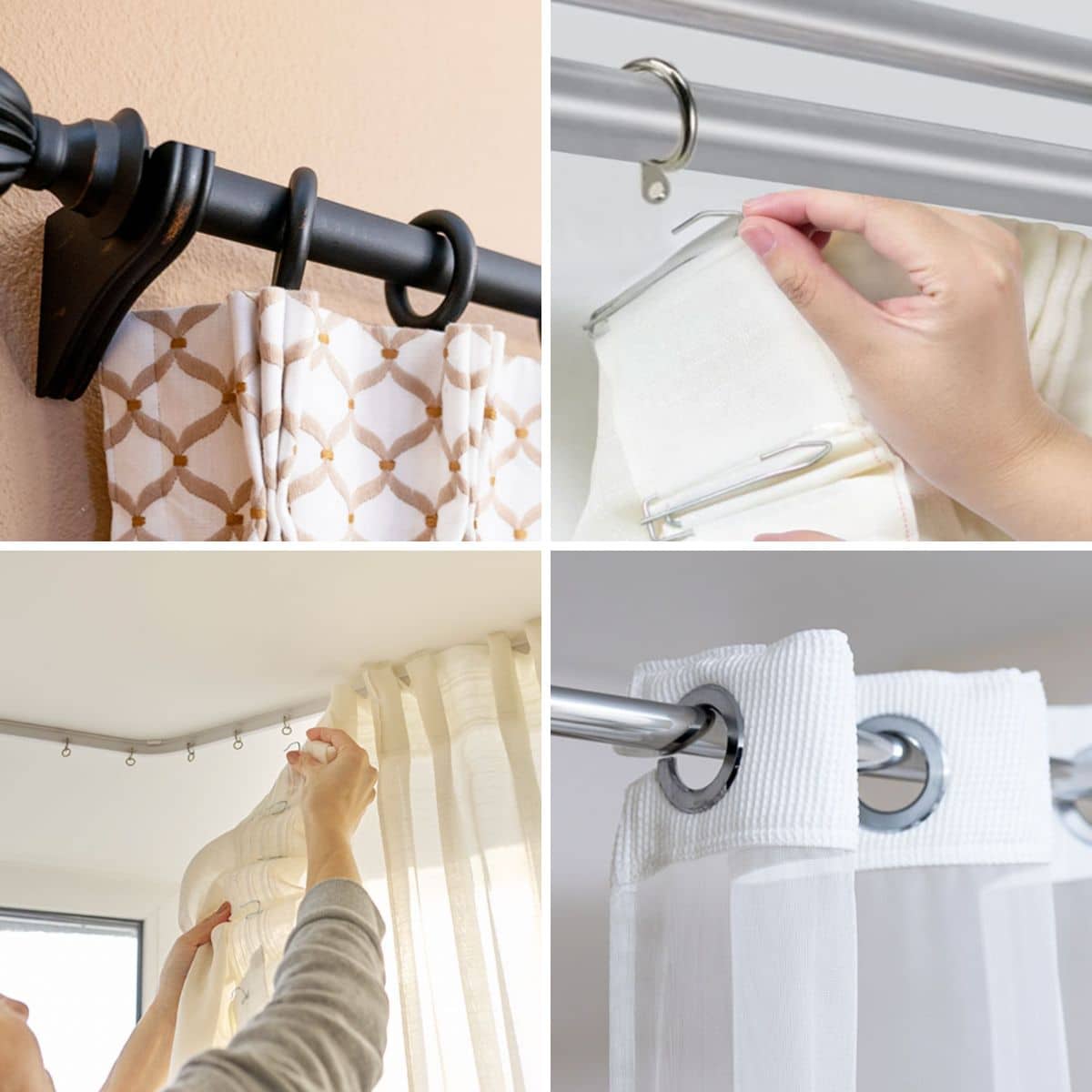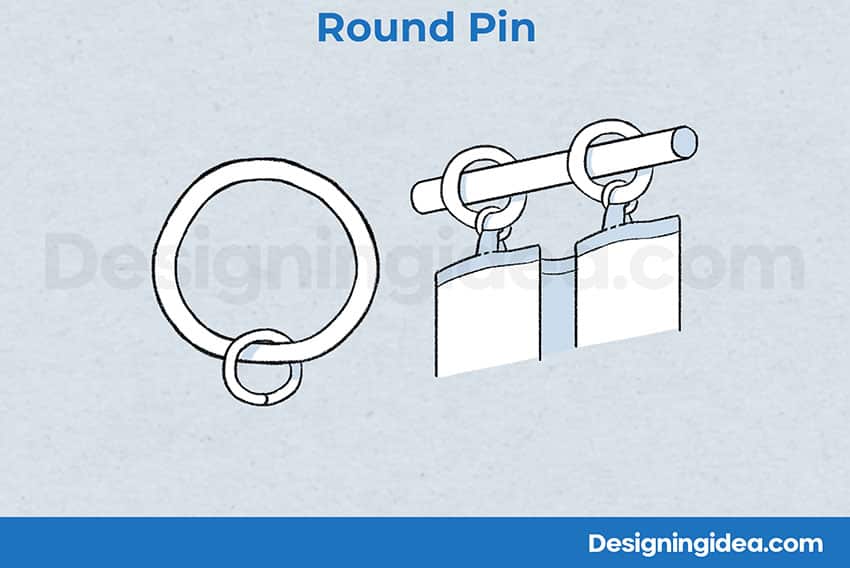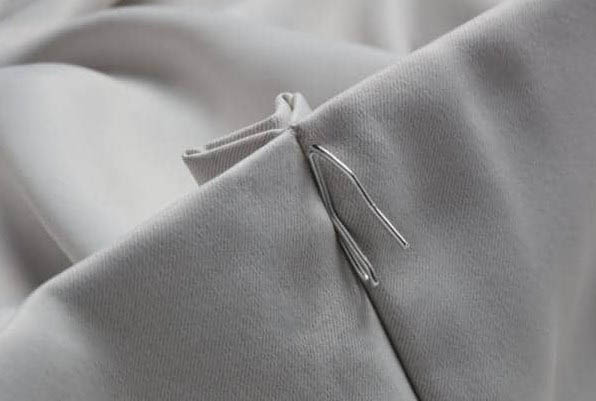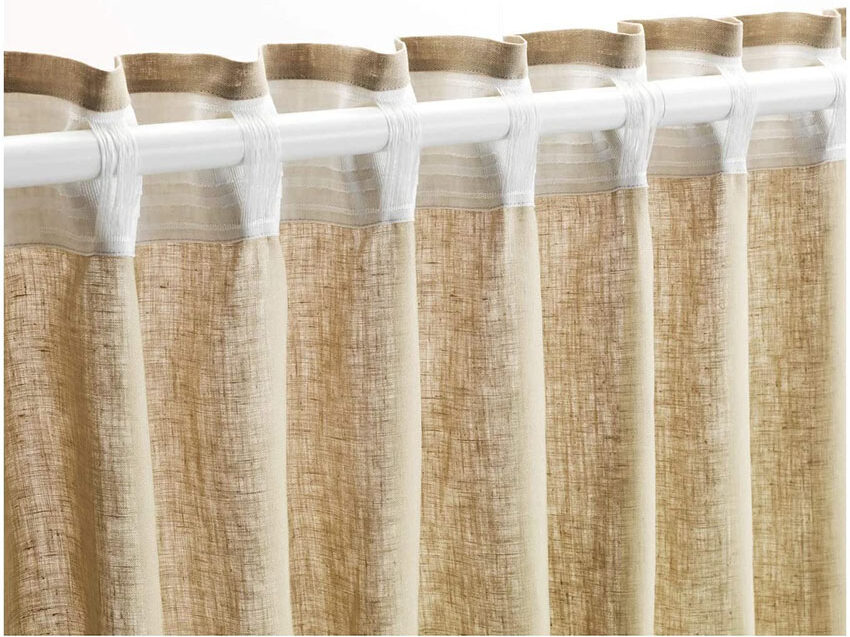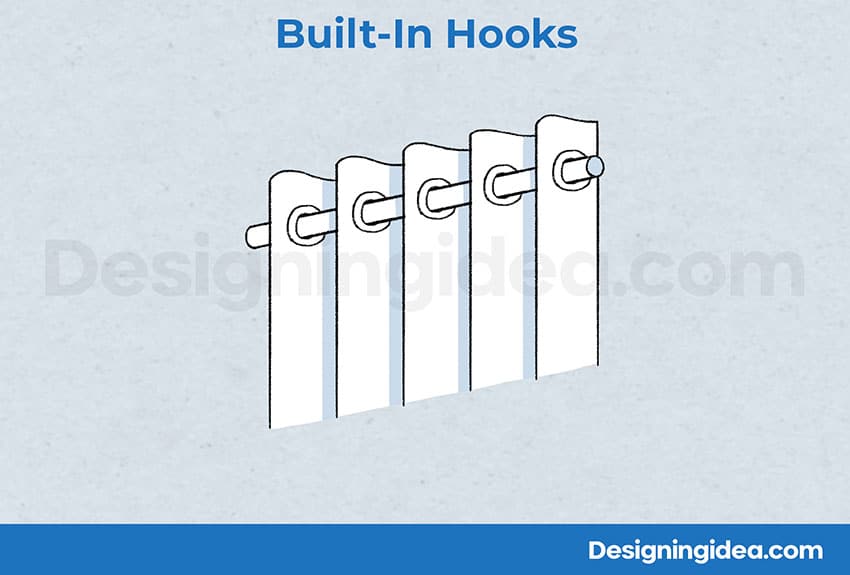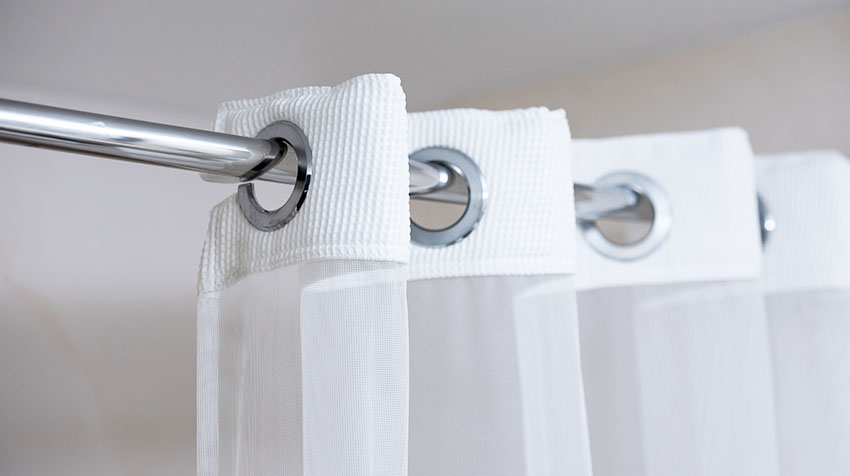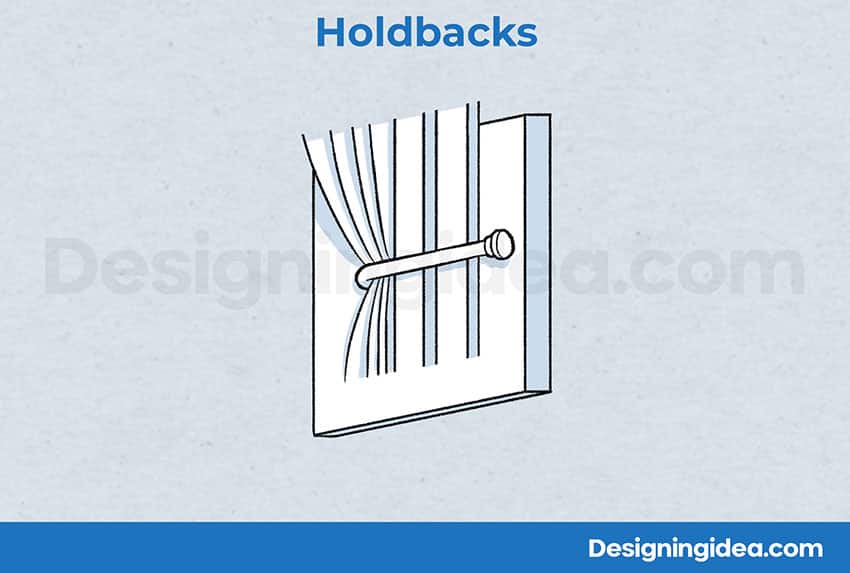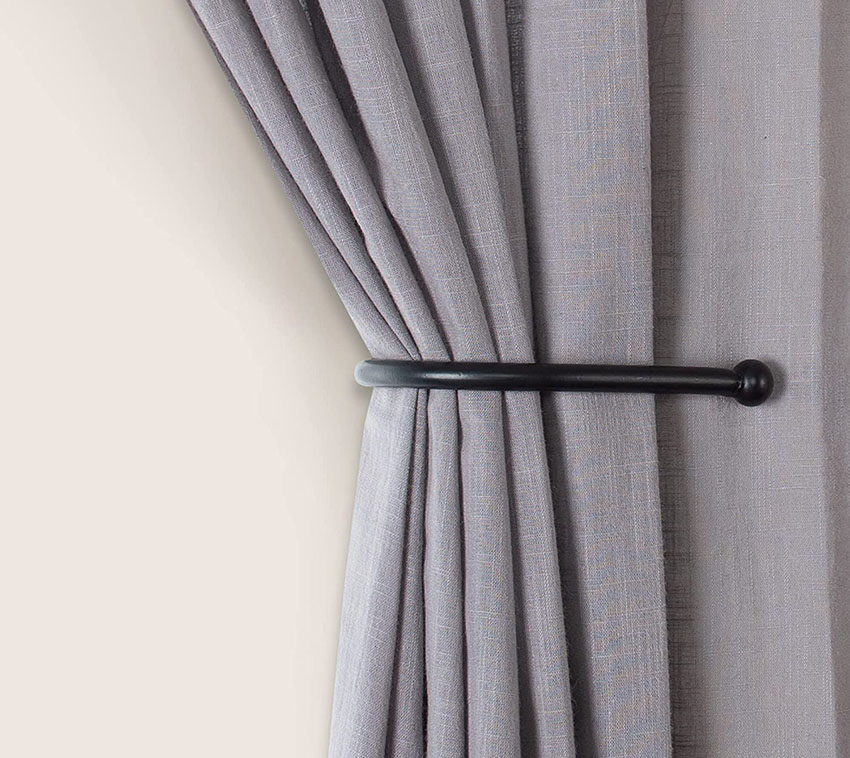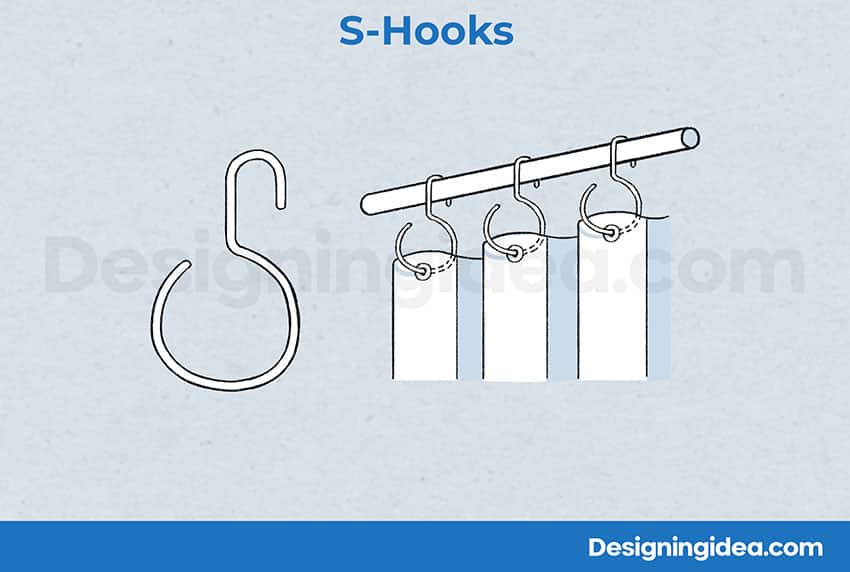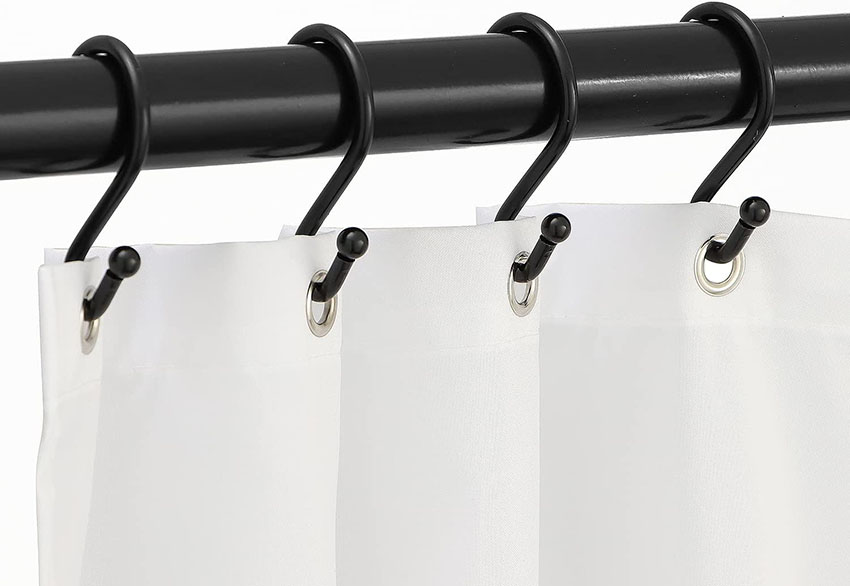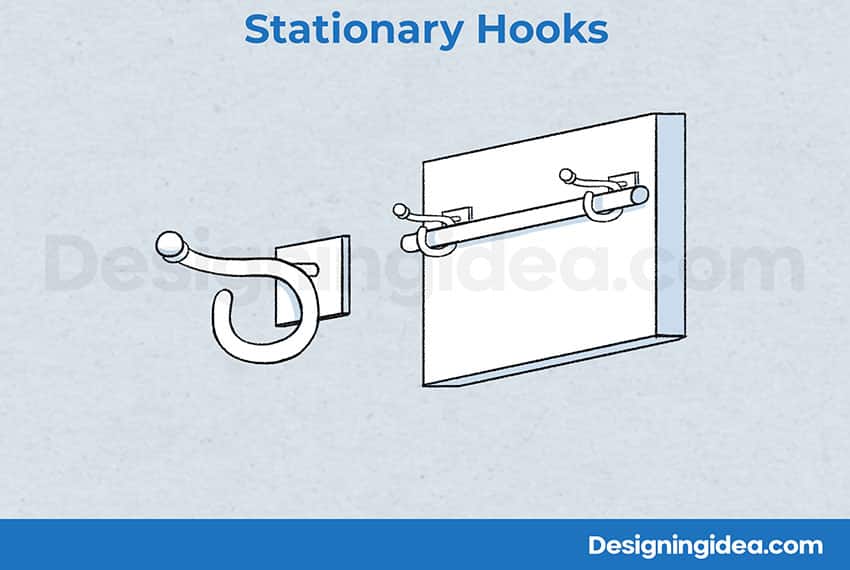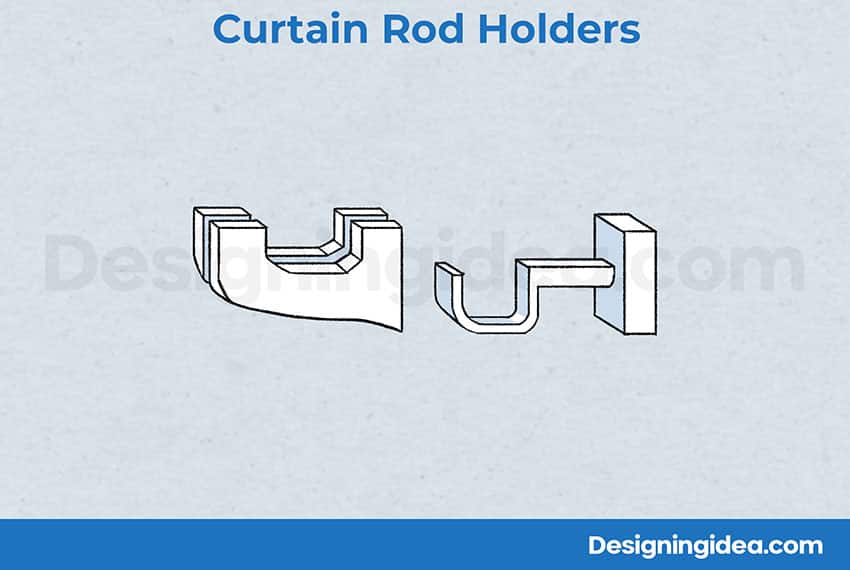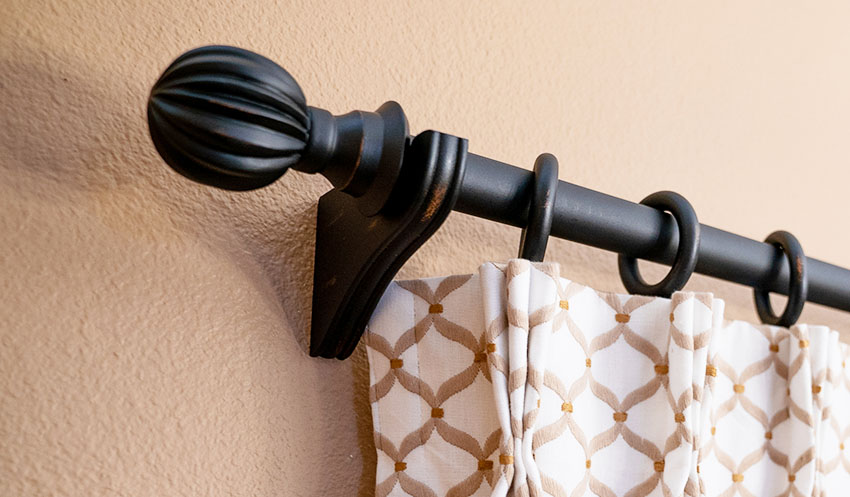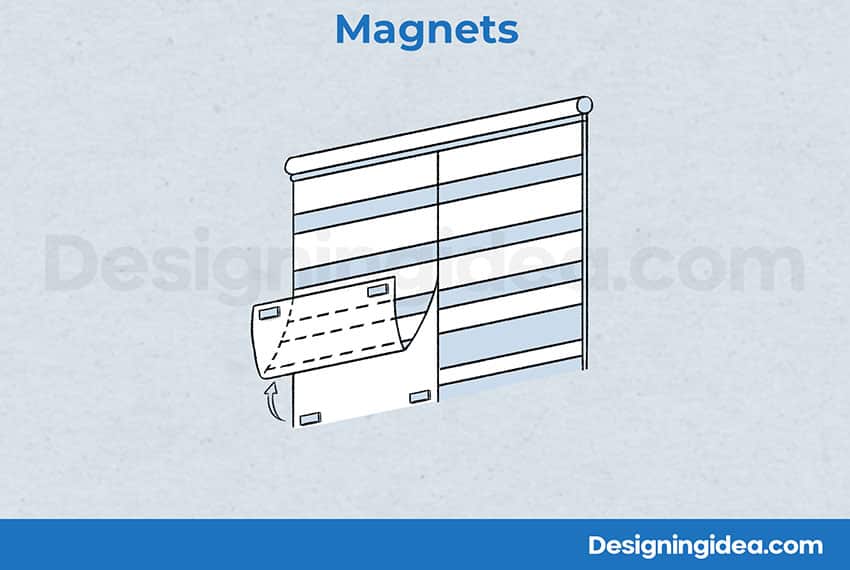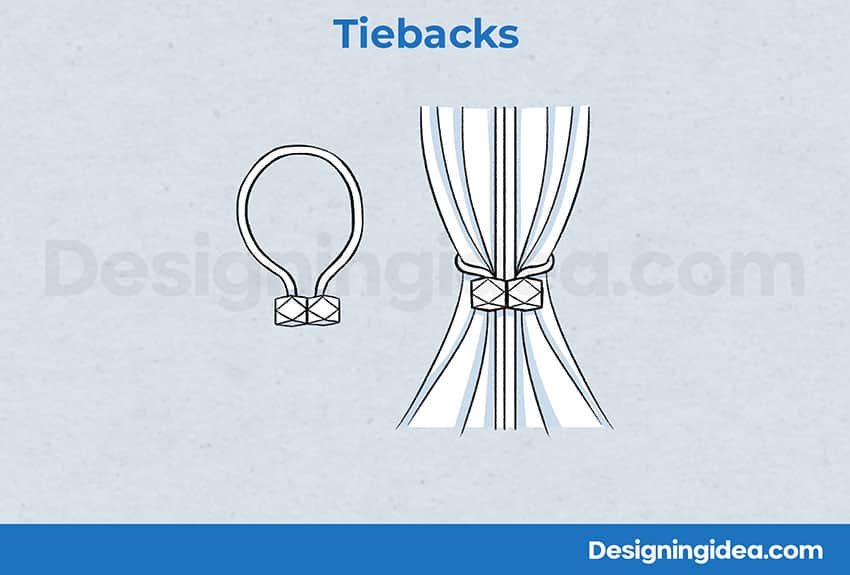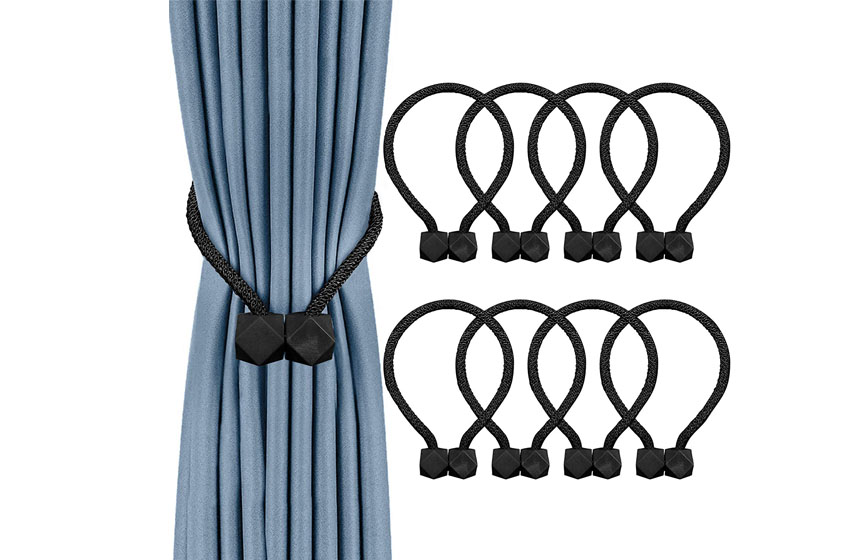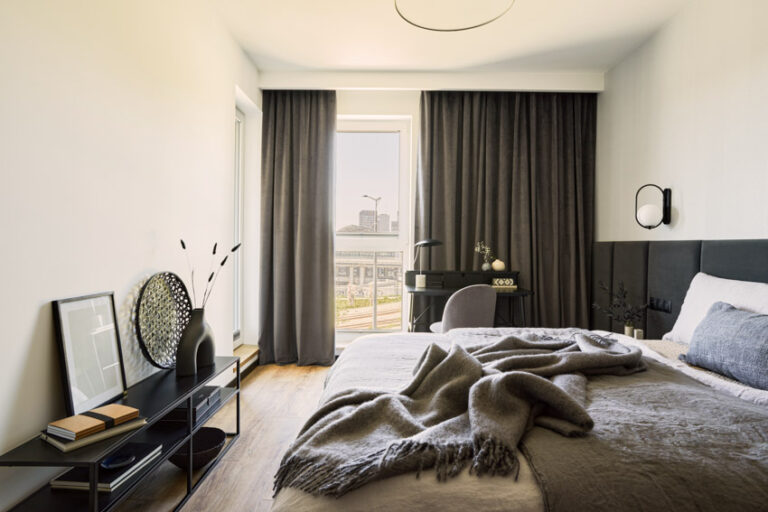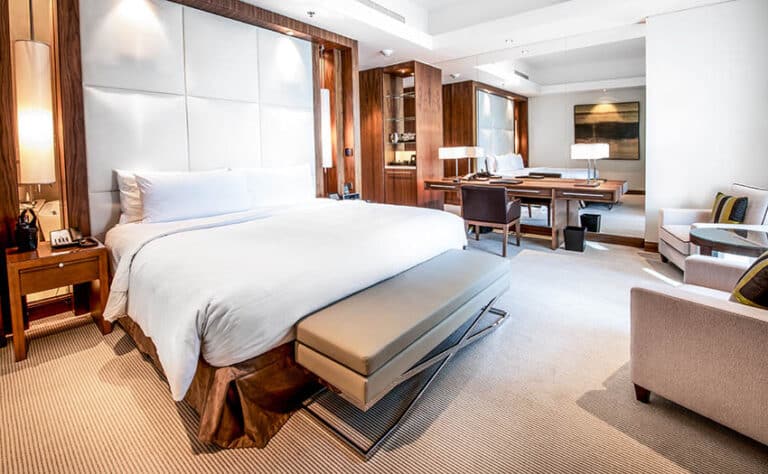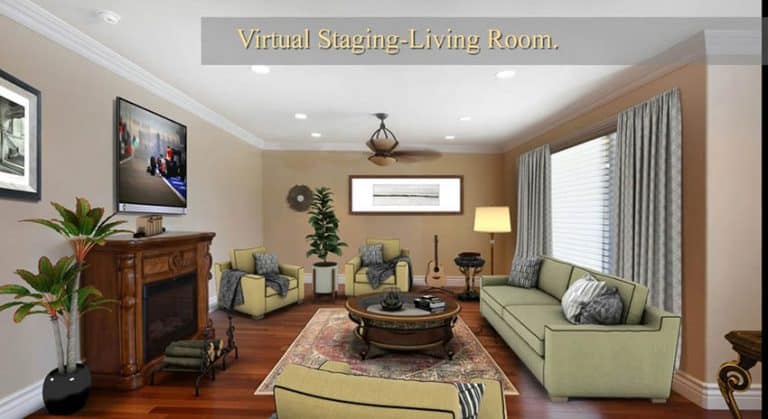15 Types of Curtain Hooks (Styles & Options)
Here we share the 15 different types of curtain hooks including different design styles and techniques you can use to hang curtains without using hooks.
Homeowners who are dissatisfied with the traditional styles of curtains and draperies could be looking for new window treatments. Fortunately, there are numerous treatment types to pick from.
However, not all curtains are the same. Hence, it is critical to know what types are necessary for your home. They come in a variety of styles and are often available in a variety of materials.
Each curtain requires a unique hook. If you are unfamiliar with the various types, you have come to the right place. We provide a guide to the various types of curtain hooks and their uses to help you become knowledgeable on the subject.
Pin-On Hooks
Pin-on hooks are one-of-a-kind options that are pinned to the backside of the curtain. They are designed to render your curtain suitable with various hooks without adding unsightly accessories.
The result is a smooth-hanging curtain that can potentially be used to conceal hooks in particular. However, this is not always simple to accomplish and will require a little more effort to install than regular variants.
Curtain tracks can be fitted with a valance rail or attached to the underside of a pelmet board. Always ensure that you use the correct type of hook to suit the curtain fitting and heading tape chosen. – Making Curtains and Blinds, Dorothy Wood
A pin-on hook is also defined as a layered metal wire with one side operating as a bent hook and the other as a pointed pin or prong. The pointed end is inserted into the top, in a thickened section of fabric known as the header, or into the drapery pleats. It is held in position by the thick material. When the curved piece is hung on a rod, it suspends.
They are also known as drapery pins, feature a sharp pin that goes up vertically to the upper end of the hook. Pinch-pleated drapes are hung with pin-on options from a traversing rod or tabbed rings on a fancy round-shaped rod.
This type of hook can be connected to a multitude of conventional rods. If you use sliding rails for your window treatments, you may also utilize these hooks with them. Pin-on hooks also come in a variety of configurations.
See this pin-on hook at Amazon [sponsored link]
Some pin-on hooks have a single sharp prong, whereas others have two. Some even have four prongs. The four-pronged system makes pleats in ordinary curtains that do not have pleats woven into the header.
This is a multifunctional hook that may be used in a number of ways. You may build a myriad of styles to match your home décor and ideas.
Here are the three variations of a pin-on hook:
Round Pin Hooks
Round pin-on hooks feature a rounded top and are designed to move on a café or sash rod. This enables pinch pleat curtains to be employed without the need for a traditional traversing rod or rod and rings hardware.
Long-Neck Hooks
Long-neck pin-on hooks are normally used for drapes with deeper headers or heavy fabric.
Pointed Top Hooks
The top of a pointed-top pin-on hook narrows into an inverted “V” configuration. The point of a traversing rod or sliding rings falls into the tab hole.
See these pointed top hooks at Home Depot [sponsored link]
A pointed top design is the most commonly used hook for hanging pinch-pleat drapes.
Sew-On Hooks
The same as pin-on hooks, sew-on types feature a hooked side, but the prongs are threaded into the fabric tape. Another distinction is that the eyelet curtains have prongs with a rounded eye, whereas the pin types feature a sharp point on one end.
Sew-on types are stitched onto the rear of the header. The attached portion is connected to pole rings, holes in a fixed rod, or slides on other types of window treatment gear like rails.
See this sew-on at Amazon [sponsored link]
The majority of sew-on options are constructed of brass. They are extremely strong and can hold heavy curtains without distorting the hooks. They are often unadorned. It is because they are invisible from the exterior. They are hand-sewn into the material of the header tape.
An alternative to sew-on is to use fabric tab-top loop curtains, a rod-pocket design, or those with built-in grommets.
Clip Rings
Clip rings are another type that looks similar to S-hooks. They may be seen through the draperies. They are available in both plain and fancy forms.
They are commonly used to hang shower curtains, but they are also obtainable for some other styles that include a buttonhole through which to slide the ring.
They only operate with curtains that have a hole at the top. With a tiny space at the top, the curtain hangs from the rings. The ring is threaded through the buttonhole, attached to a rod, and securely locked into position.
This is a common style that is gaining popularity for use in interior design beyond the bathroom. It is indeed a versatile design that fits over any rod with a lower diameter in comparison to a ring hook.
See this clip rings at Home Depot [sponsored link]
The clips attach to any material and can be employed as a curtain. This is ideal for homeowners who dislike sewing, want to use a special fabric, or dislike dealing with traditional rings.
Clip rings are simple to use and relatively safe. Nevertheless, if you get clips that cannot withstand the weight of the curtain, you will be dealing with them for the long term. As a result, all you need to do is find a compatible pair and everything will be set.
Pleat Hooks (Prong Hooks)
Pleat hooks are also referred to as prong. These tools operate with pleater tape sewn into the panel’s header. The pleater tape features thin, vertically positioned pockets that emerge at the tape’s bottom part.
Once you place the prongs within the track pockets at frequent intervals, you can produce pleats in the front of the curtain heading panel. The curtain can then be hung from the rail or ring tabs in the same way that pin-on hooks are. Pleater hooks come with two, three, or four prongs, allowing you to make single, double, as well as triple pleats.
Pleat curtain hooks are identical to pin-on, except that they create pleats in the curtain. Since there are only a few types of curtains that now have built-in pleats, this is a brilliant design that can be used on practically any curtain.
Moreover, this is a specialized hook used to make pleats in plain drapes. They are a variety of pin-on hooks with four prongs that generate pleats in the curtain material. They can be used to hang almost any type of curtain or drape.
You should be aware that when pleat hooks are inserted into a curtain, the fabric is affected. They alter the curtains‘ look and reduce their width.
Pleat hooks, on the other hand, are difficult to remove. The new pleating appearance in the fabric may be retained. You have to leave enough width for the curtain panels to fit the amount of material that will be used to create each pleat.
Built-In Hooks
The typethat is normally used for hanging on a shower curtain rod is referred to as a built-in hook. They are basic accessories that slot into the top hole of a plastic curtain and are hanging from a round rod. They are easy to put on and take off.
Built-in hooks are extremely frequent, which are particularly seen in shower areas. This style has holes on the top that are surrounded by plastic or metal rings.
These are used by simply slipping the hooks right onto the rod. It is extremely simple if you know how to switch sides and do not skip any hooks. Otherwise, you will have to start from scratch.
Another alternative to shower built-in is pass-through or runner hooks that are designed to fit within a track system. They come with many small hooks that move smoothly from side to side freely within the track mechanism.
Holdbacks
Although holdbacks are still hooks, they are those types that you hang up before hanging the curtain on them. A rod is not required when using these.
You can utilize one if you want, but it will not be required. Alternatively, you hang the holdbacks on the corners before hanging the curtain.
Holdbacks are not the same as the other types we have talked about. They are adaptable since they do not necessitate a specialized rod type. Holdbacks are hooks you pre-hang, as aforementioned. You hang them in the window’s corners with curtains draped on them.
See this holdback hook at Amazon [sponsored link]
They can be used to make short curtains. Other hook kinds are required for long-hanging draperies, but holdbacks are used to create attractive window coverings.
Furthermore, holdbacks are essential so that you never let the window treatment hang downward, as opposed to long drapes that are used to shade the home interiors.
S-Hooks
S-hooks get their appellation from their shape, which resembles the letter S. Most of these are constructed of metal; however, some are constructed of timber or plastic.
Shower curtains or any other type with a buttonhole grommet at the upper end for hanging are most typically utilized with S-hooks. What you only need to do is hook one side of the curtain to the rod as well as the other side to the rod.
The hook is inserted into the hole and the other end is latched over the rod. The hook is visible above the drape since it is uncovered. They are available in a variety of colors and styles, ranging from plain to ornamental.
See these s-hooks at Amazon [sponsored link]
The drawback of s-hooks is that if the curtain becomes entangled and you tug on it, they can quickly come unfastened from the grommet. This has the potential to cause the curtain to fall. When using this style of hook with children, take extra care.
Stationary Hooks
Stationary hooks are normally used for decoration. Above the window, hooks or handles, such as coat hangers or old door knobs, are installed, and curtain ties or clips are affixed over them.
The panel remains immovable. However, it can be opened and closed using a tie-back at the window’s side.
Curtain Rod Holders
Curtain rod holders, also known as brackets, are the accessories that keep the rod in place. Rods are always bracketed to the wall or ceiling. The size, design, and form of these vary greatly depending on the rod you choose. Read more about curtain rod sizes here.
Several holders are purely functional and appear unnoticeable when the rod and curtains are placed. Certain holders are decorative and intended to be seen as part of your project.
When browsing for brackets, you will come across some new terms. The gap between where the curtains hang and the wall is known as the “return.” The “clearance” is the distance between the rod’s backside and the wall. The “projection” is the distance from the wall to the bracket’s outermost position.
Hanging Curtains Without Hooks
If you want to try something innovative instead of the same old things, we have several window treatment recommendations for you. Yes! They can be hung without the use of hooks. Here are the three fundamental techniques:
Magnets
Magnets can be used in a plethora of methods. They can be sewed into the curtain or employed to magnetize it to another object. They are frequently incorporated into the curtain and linked to other magnetic materials.
Aside from that, magnetic ropes can be used to hold your curtains back. Instead of using wall hooks, these can be utilized to keep them out of the way even though they do not work that well for hanging curtains.
Tiebacks
Tiebacks for curtains surround them and are typically attached to a wall hook. These accessories can also arrange and hang a curtain in the center of a window. Tiebacks are formed of flexible elements such as fabric, rope, or cord.
See this tieback curtain holder at Amazon [sponsored link]
Tiebacks are an excellent choice if your curtains are ornamental and frequently remain open, and they are an incredible solution if you want to hang them without using hooks.
If you have flowing swag or scarf drapes you can use tiebacks or a similarly designed swag holder to get the flowing look you want.
Curtain Holdbacks
Curtain holdbacks and tiebacks serve the same purpose but differ in appearance and placement. These holdbacks are u-shaped pieces of hardware that connect to the wall near the window framing. Drawing a curtain behind a holdback keeps it open.
Moreover, holdbacks are typically formed of tough materials such as metal, iron, or wood. These holdbacks are a fantastic alternative if your curtains are more utilitarian than decorative. Their constant position makes it simple to open and close curtains.
What type of curtain hook products are your favorite? Please share your questions, and favorite tips for choosing window treatments for the bedroom and living room below. Visit our guide to the different ways to hang sheer curtains for more related content.

